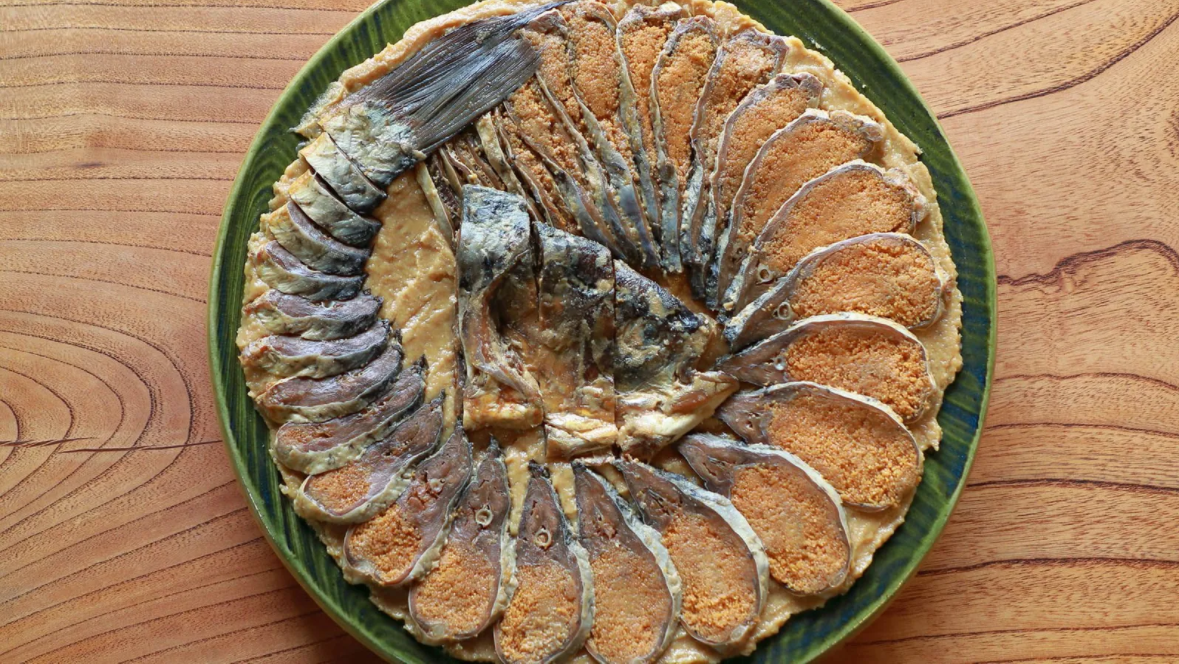
©Tom Schiller via BBC News
Pre-reading questions:
I will read each question. Then, please answer them.
講師がそれぞれの質問を読むので答えましょう。
- What type of sushi is famous in your city?
- What type of sushi have you not tried yet?
Vocabulary:
I will read the words, meanings, and sample sentences. Then, repeat after me.
単語、意味、例文を読みます。講師に続いて音読しましょう。
- prefecture /PREE-fek-cher/
- freshwater /FRESH-waw-ter/
- flavor /FLEY-ver/
- dislike /dis-LAHYK/
- ingredient /in-GREE-dee-uhnt/
[noun] – a political region or local government area in some countries
Where is Tottori Prefecture located?
[adjective] – living in or containing water that is not salty
The largest freshwater fish in the world can be found in Russia.
[noun] – the particular way a substance, especially food or drink, is recognized from its taste and smell
Which flavor do you want for the cake, chocolate or vanilla?
[verb] – to not like someone or something
I dislike dairy so I don’t drink milk.
[noun] – one of the parts in a mixture
The dish’s main ingredient is green pepper
Article reading:
Please read the whole article. Then, I will check your pronunciation and intonation.
記事を音読しましょう。講師はあなたの発音とイントネーションを確認します。
Narezushi was the first sushi made. But Shiga Prefecture made its type of narezushi using funa (carp): funazushi.
Funa is Japan’s king of freshwater fish, and nigorobuna (crucian carp)—the original type of carp to make funazushi—can only be found in Lake Biwa. Out of the five shops around the lake that retails funazushi, a shop owned by Kitamura Mariko and her husband Atsushi sells the most authentic. Kitamura’s funazushi tastes like blue cheese with its lacto-fermented, sour, salty, and umami-rich flavor. Some people may enjoy it, while others may dislike it due to its strong smell.
The sushi we know today is technically called hayazushi (fast sushi), invented in the Edo period as the “fast-food” version of narezushi. Hayazushi uses fermented rice vinegar and soy sauce as ingredients to copy the sour and salty flavor of funazushi. Lake Biwa’s trademark sushi may not be for everyone, but it’s a must-try in these modern times to get a taste of Japan’s culture.
Funa is Japan’s king of freshwater fish, and nigorobuna (crucian carp)—the original type of carp to make funazushi—can only be found in Lake Biwa. Out of the five shops around the lake that retails funazushi, a shop owned by Kitamura Mariko and her husband Atsushi sells the most authentic. Kitamura’s funazushi tastes like blue cheese with its lacto-fermented, sour, salty, and umami-rich flavor. Some people may enjoy it, while others may dislike it due to its strong smell.
The sushi we know today is technically called hayazushi (fast sushi), invented in the Edo period as the “fast-food” version of narezushi. Hayazushi uses fermented rice vinegar and soy sauce as ingredients to copy the sour and salty flavor of funazushi. Lake Biwa’s trademark sushi may not be for everyone, but it’s a must-try in these modern times to get a taste of Japan’s culture.
True or False:
Read the sentences and identify if they are true or false based on the article.
文章を読んで、記事に基づいて正誤を答えましょう。
- Funa is the king of freshwater fish in Japan.
- Nigorobuna can only be found in Lake Biwa.
- Kitamura Mariko’s shop can be found in Hikone.
- Kitamura’s funazushi has a strong taste.
- Hayazushi was created in the Meiji Era.
Fill in the blanks:
Choose the correct word from the table then fill in the blanks.
適切な言葉を選んで空欄を埋めましょう。
| prefecture | freshwater | flavor | dislike | ingredient |
- You can find many _______ fish here.
- What vegetables do you _______?
- You’ll need its other _______ like salt and pepper.
- There are 47 _______ in Japan.
- I like the _______ of this dish. It’s spicy.